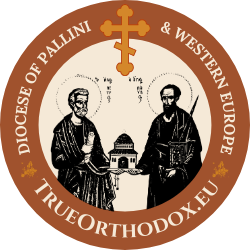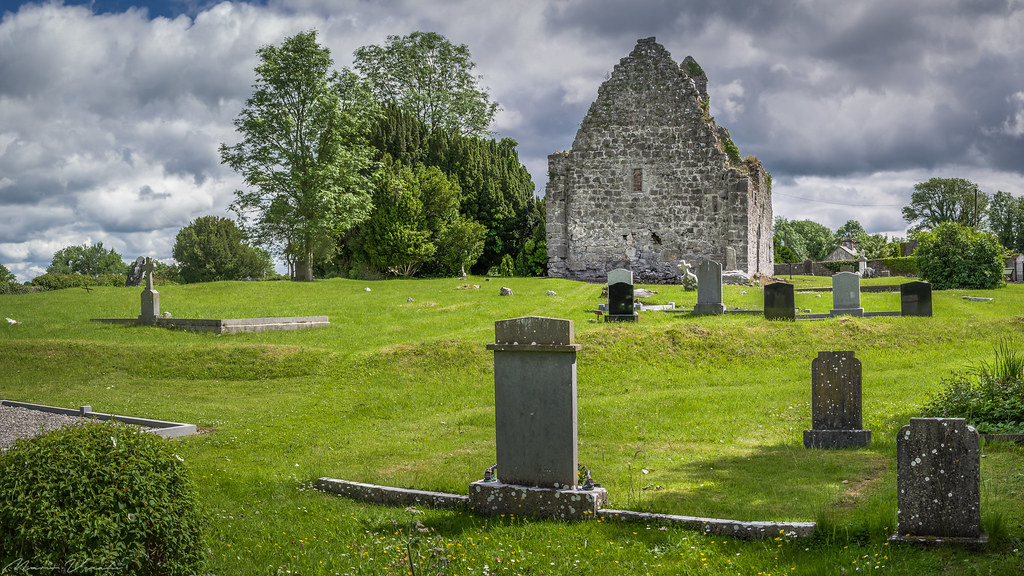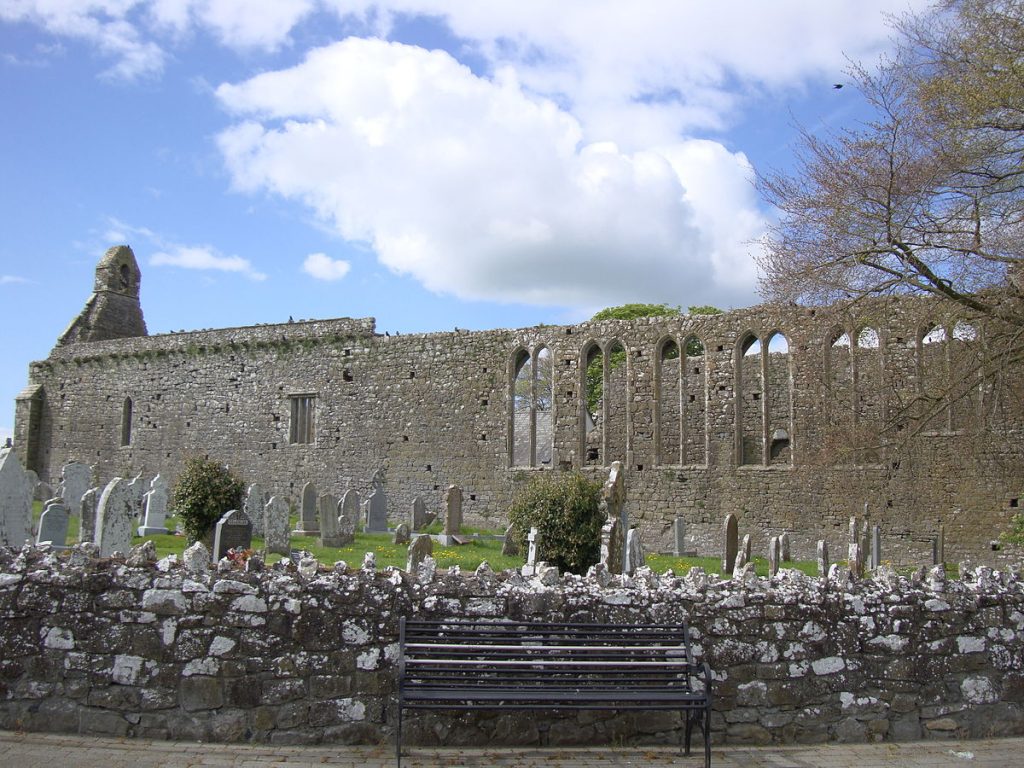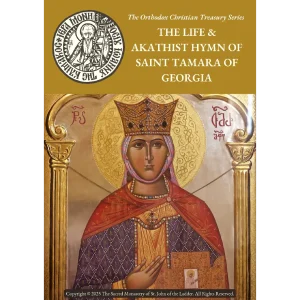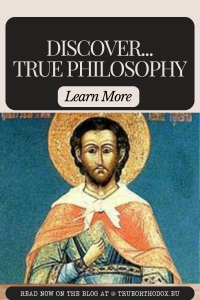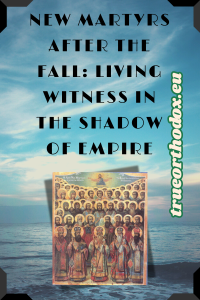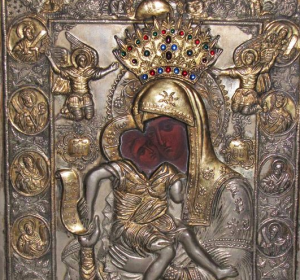St. Ruadhan or Rodan
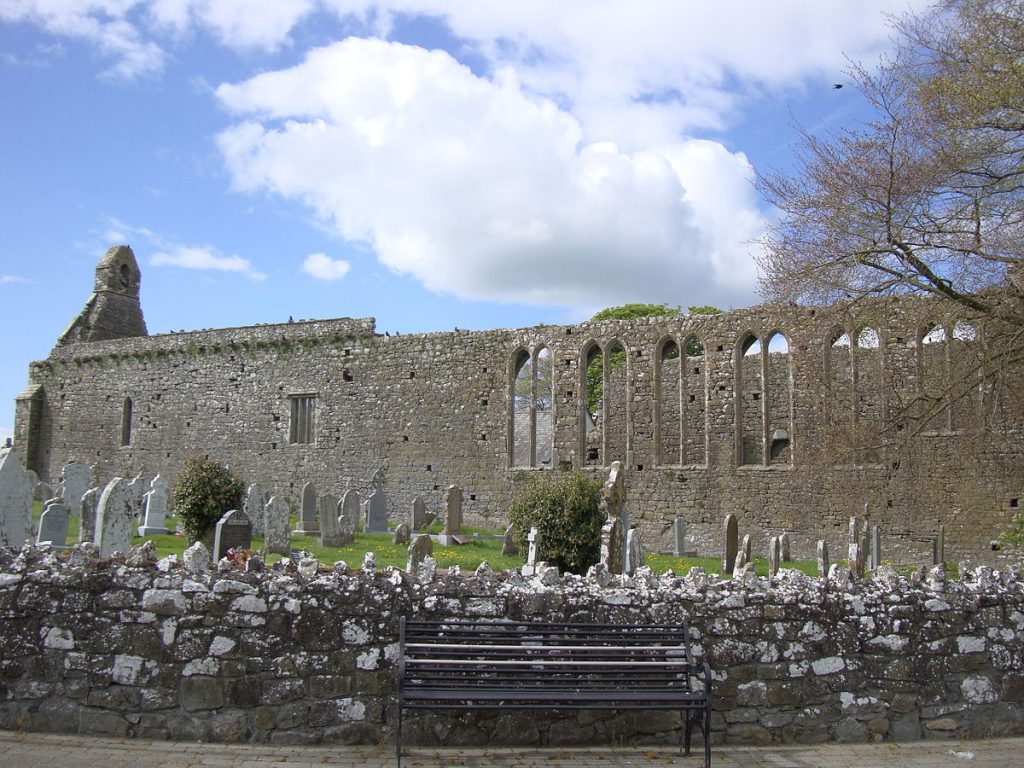
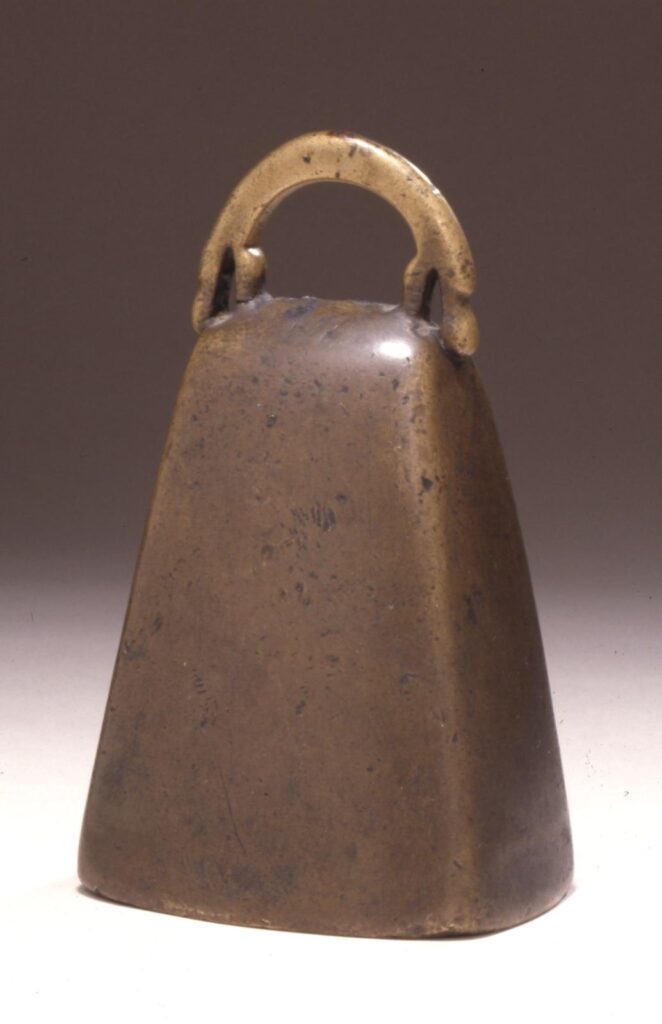
St. Ruadán mac Fergusa Birn, also known as Rowan, Rodon, and Rodan, was an Irish Christian abbot who founded the monastery of Lorrha (Lothra, County Tipperary, Ireland), near Terryglass. He was known for his prophesies. After his death, he was venerated as a saint and as one of the “Twelve Apostles of Ireland“. He was born in Leinster, Ireland, and was a disciple of St. Finian of Clonard. Ruadan was the founder of the monastery of Lothra, in Tipperary, which had 150 monks. His feast day is April 15. He fell asleep in the Lord in the year 584. His bell is preserved in the British Museum.
Ruadan was born in Tara in Leinster, Ireland, and was educated at Clonard, Co. Westmeath by St. Finnian. He is known as one of the Twelve Apostles of Ireland. He is said to have replaced St. Brendan (the navigator) at Lorrha, who preceded to cross the Shannon and set up his monastery at Clonfert, Co. Galway. Ruadan founded a monastic settlement there, where he directed 150 monks. A ditch or large mound would have been built around the settlement to keep animals in and intruders out, the outlines of which are still visible today. Life for the monks would have been tough but simple, rising early from their beds which would have consisted of rushes or straw placed on the bare ground. They then would pray and fast between their domestic chores. The settlement would have been self-sufficient in those days providing everything from food, clothing, to shelter. Villages and towns often popped up around monastic settlements as trade and refuge attracted the local people, the origin of Lorrha village can be attributed to this.
Ruadan is said to have died at the monastery of Lorrha on April 15, 584. His feast is kept on the anniversary of his death.
Ruadán’s prophecy
His embassy in 556 to King Diarmait mac Cerbaill at Tara, is worked into a legend known as the “Curse of Tara”, but the high-king continued to reside at Tara till his death in 564. The legend as to Tara’s halls having been deserted after 564 is of comparatively late origin. Adomnan held a synod at Tara in 697.
Diarmuid Mac Cerbhaill had violated the sanctity of the church by taking a hostage from its protection. The downfall of Tara from a once-thriving royal residence is credited to Ruadhan.
Ruadán gave the prophecy that Diarmait would be killed by the roof-beam of his hall at Tara. Diarmait had the beam cast into the sea. Diarmait then asked his druids to find the manner of his death, and they foretold that he would die of slaughter, drowning and burning and that the signs of his death would be a shirt grown from a single seed of flax and a mantle of wool from a single sheep, an ale brewed from one seed of corn, and bacon from a sow which had never farrowed. On a circuit of Ireland, Diarmait comes to the hall of Banbán at Ráith Bec, and there the fate of which he was warned comes to pass. The roof beam of Tara has been recovered from the sea by Banbán and set in his hall, the shirt and mantle and ale and bacon are duly produced for Diarmait. Diarmait goes to leave Banbán’s hall, but Áed Dub, waiting at the door, strikes him down and sets fire to the hall. Diarmait crawls into an ale vat to escape the flames and is duly killed by the falling roof beam. Thus, all the prophecies are fulfilled.
The bell of St. Ruadan was found in a well-named after the Saint and is preserved in the British Museum.[5] This well is situated across the road from the present-day Church of Ireland.
source: Wikipedia
